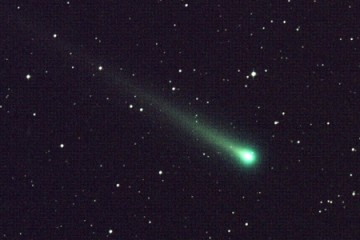On the evening of March 17, 2011, the Messenger spacecraft—built and operated by the Johns Hopkins University Applied Physics Laboratory in Laurel, Maryland—made history when it became the first to orbit Mercury. Over the past four years, Messenger's instruments have fully mapped the surface of our solar system's innermost planet and yielded discoveries that have changed views on how the inner planets formed and evolved.
"Messenger truly is an extraordinary mission," said Peter Bedini, a senior management advisor and former project manager for the mission. "When it began its primary mission four years ago, the spacecraft had already traveled almost five billion miles and completed six planetary encounters. During its pre-orbital Mercury flybys alone, Messenger collected as much data as Mariner 10—the only other spacecraft ever to visit the innermost planet—and began addressing questions about Mercury that had remained unanswered for more than 30 years."
After more than 10 years in flight, Messenger and its scientific instruments remain remarkably healthy, but the spacecraft's propulsion system is running on fumes. The force of solar gravity continues to perturb the spacecraft orbit in a manner that drives the probe downward toward the planet's surface with each approach, and the tanks of propellant, which needed to boost the spacecraft to higher altitudes, are running dry.
On Wednesday, the team conducted the first of five final orbit-correction maneuvers designed to keep Messenger in orbit up to four weeks longer, possibly as late as April 30. But sometime within the next few months, Messenger will inevitably crash into Mercury's surface.
"The success of Messenger is a direct result of the talent and dedication of the team that designed and built it more than a decade ago, and of those who have operated it and directed the science data collection since launch in 2004," said Helene Winters, Messenger's current project manager. "The results of this Discovery-class mission have rewritten the book on Mercury and filled an important gap in our understanding of our Solar System."
The mission has also contributed to NASA's technology base, said David Grant, who served as the mission's project manager for five years, overseeing the development, integration, testing, and launch of the spacecraft and subsequent mission operations, including the Earth flyby and two Venus flybys.
Grant offers two examples:
Messenger is the first mission to utilize "solar sailing," that is, to correct the trajectory of the spacecraft with the Sun's radiation, saving propellant and extending mission operations.
The project is also the first to use SciBox, an automated science planning and commanding tool, for all data acquisition. Given spacecraft operational constraints and instrument operational constraints and objectives, the tool provides the science planner with an optimized set of opportunities to take observations and produces an integrated command sequence for the payload.
Messenger—short for Mercury Surface, Space Environment, Geochemistry, and Ranging—is a NASA-sponsored scientific investigation of the planet Mercury and the first space mission designed to orbit the planet closest to the sun. The spacecraft was launched on August 3, 2004.
Posted in Science+Technology
Tagged applied physics laboratory, nasa, space, messenger











